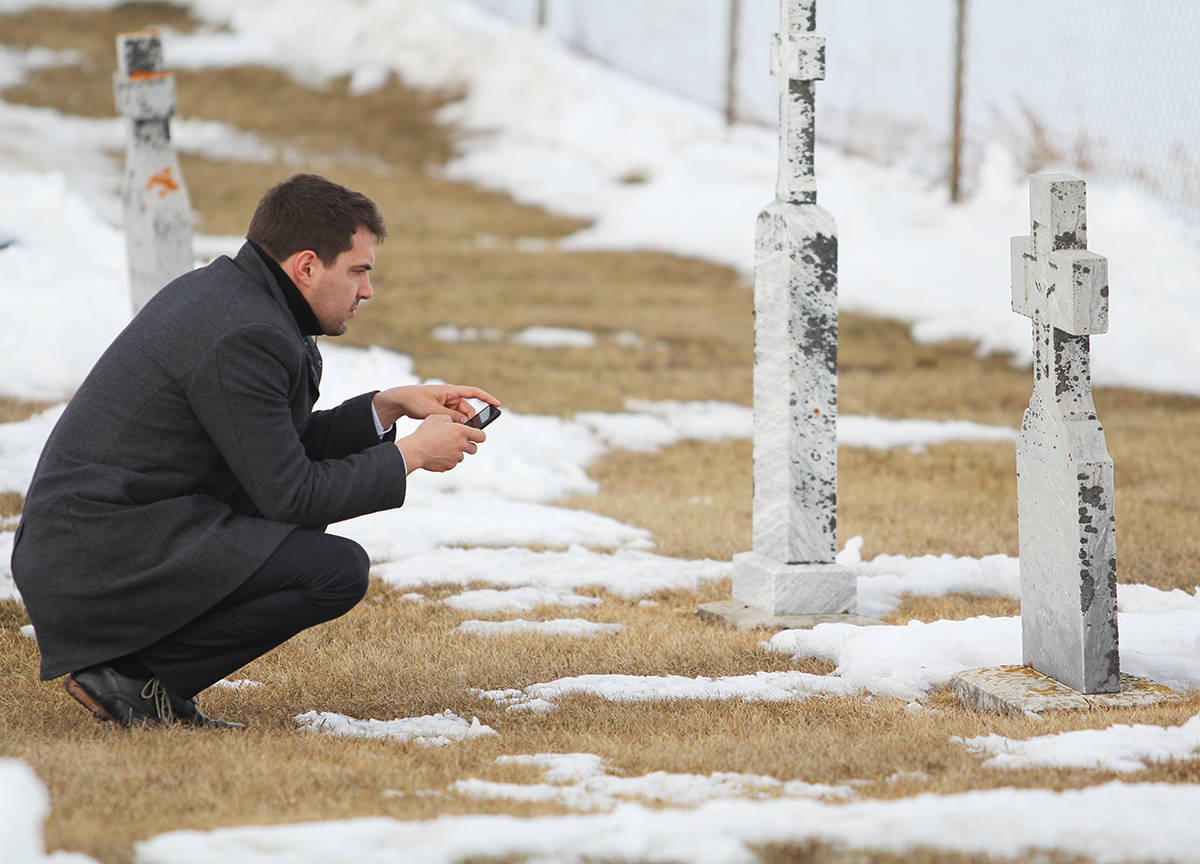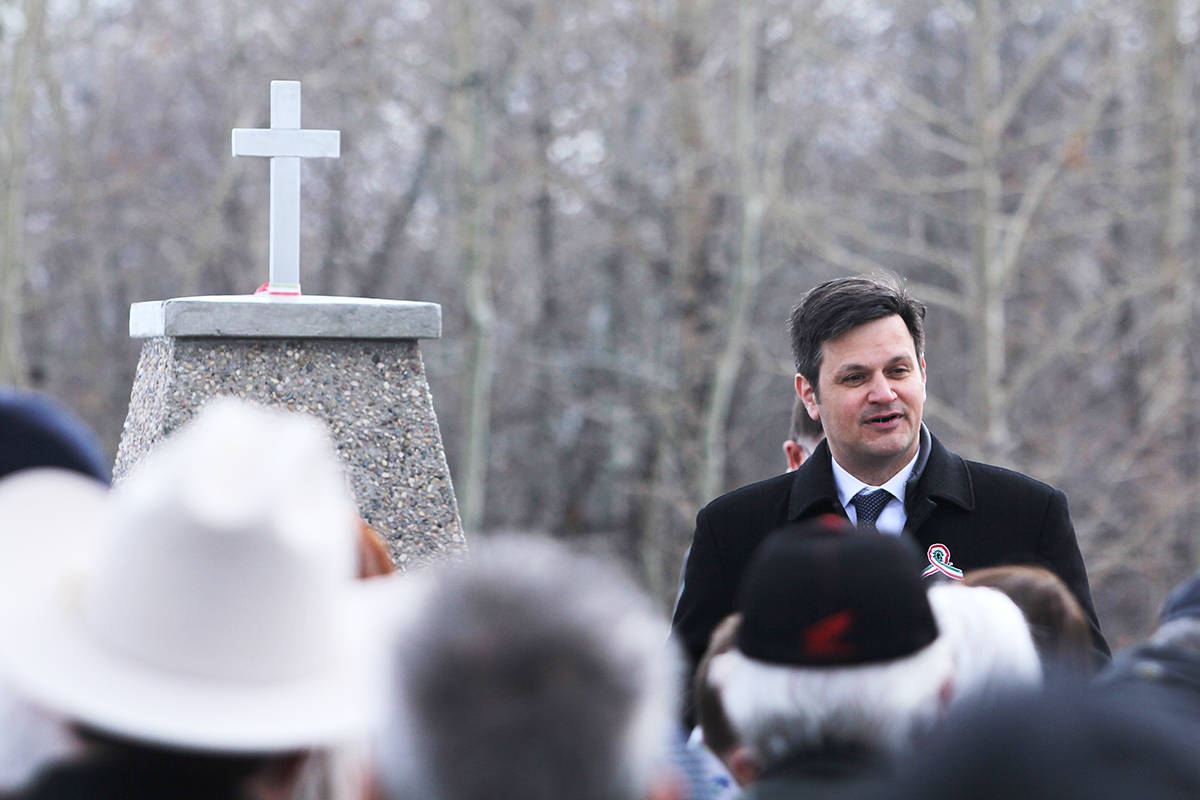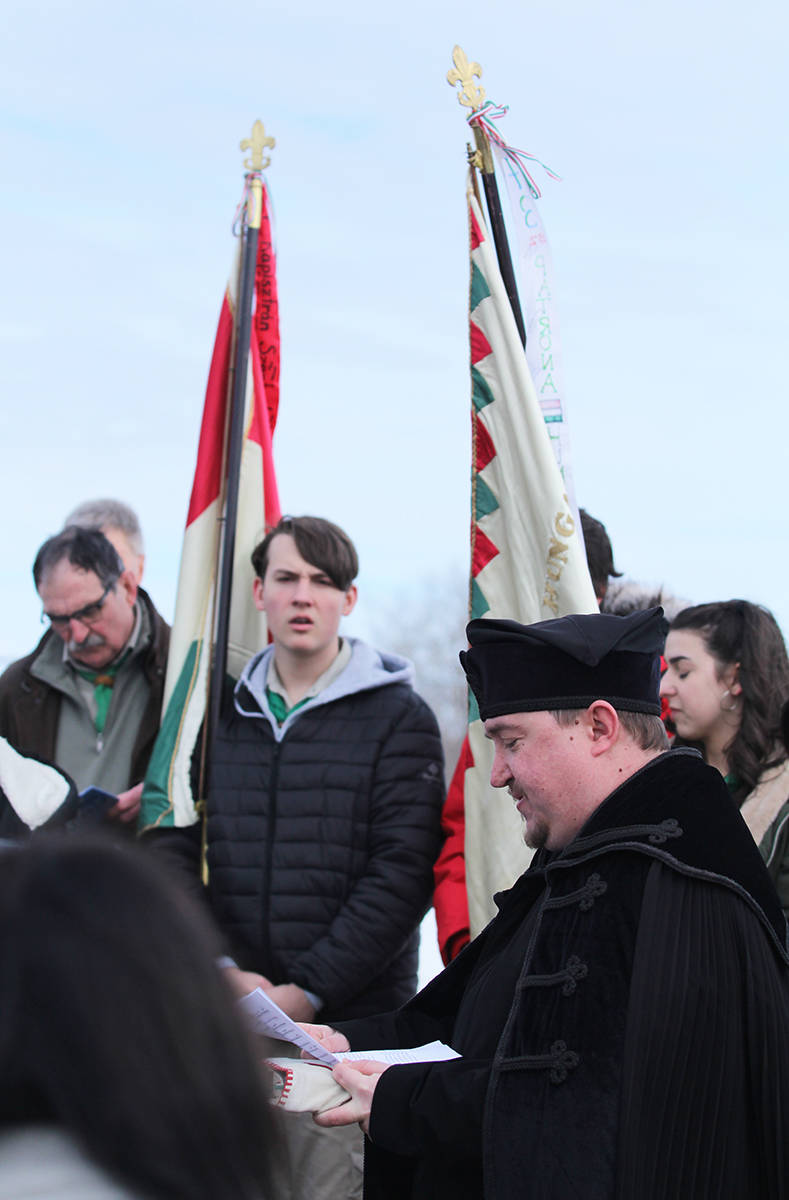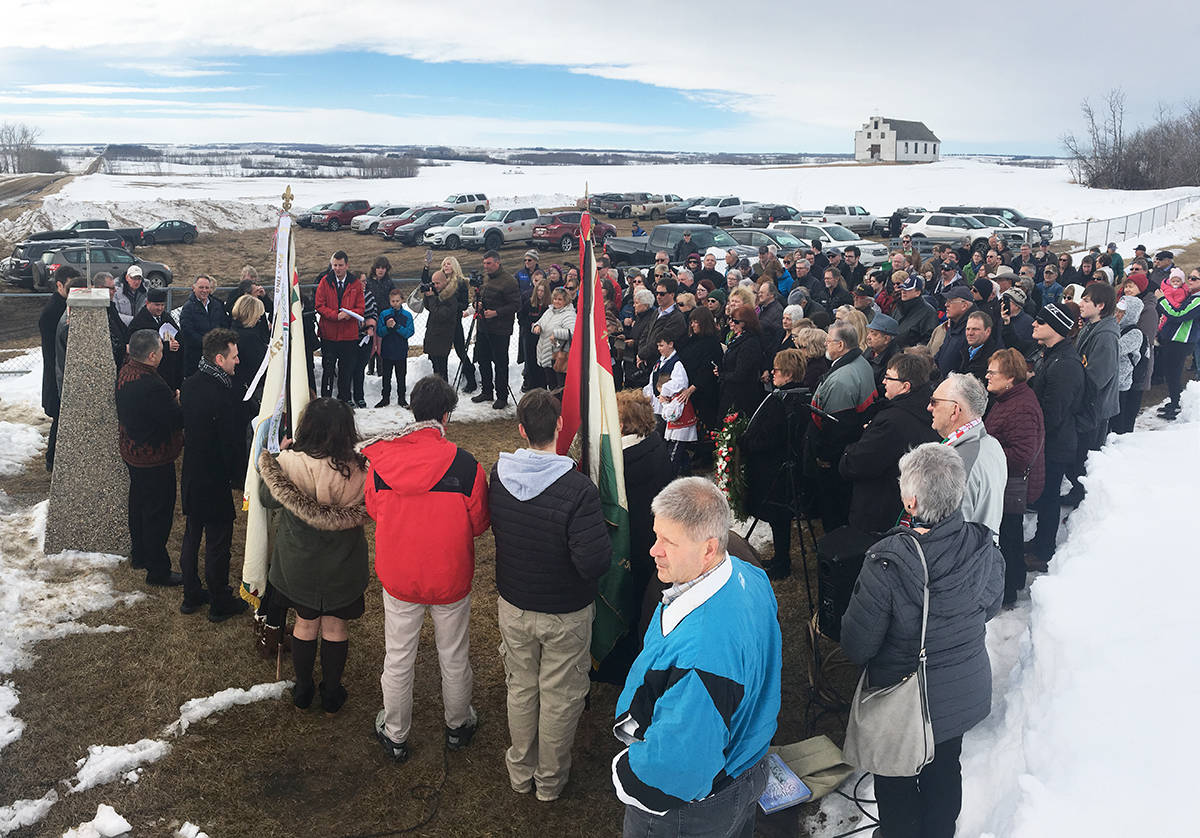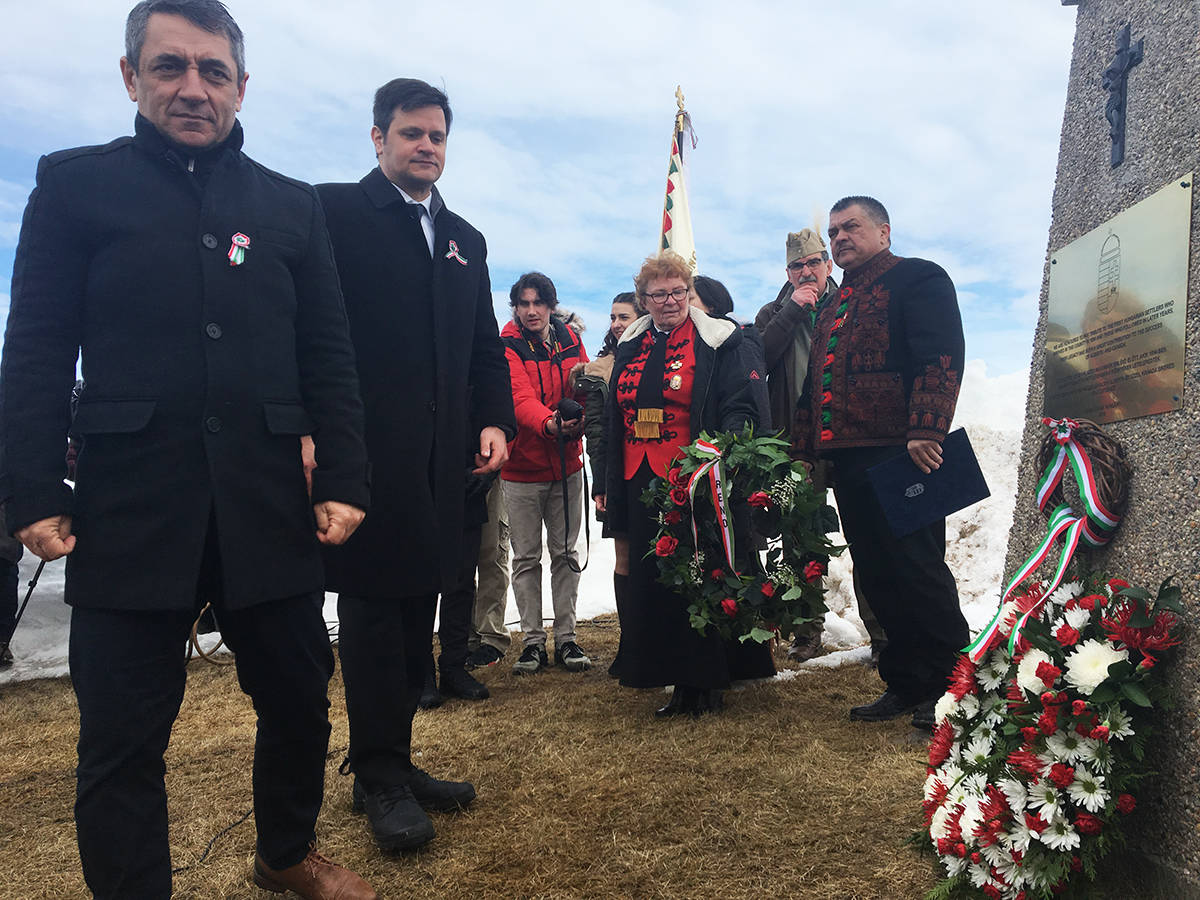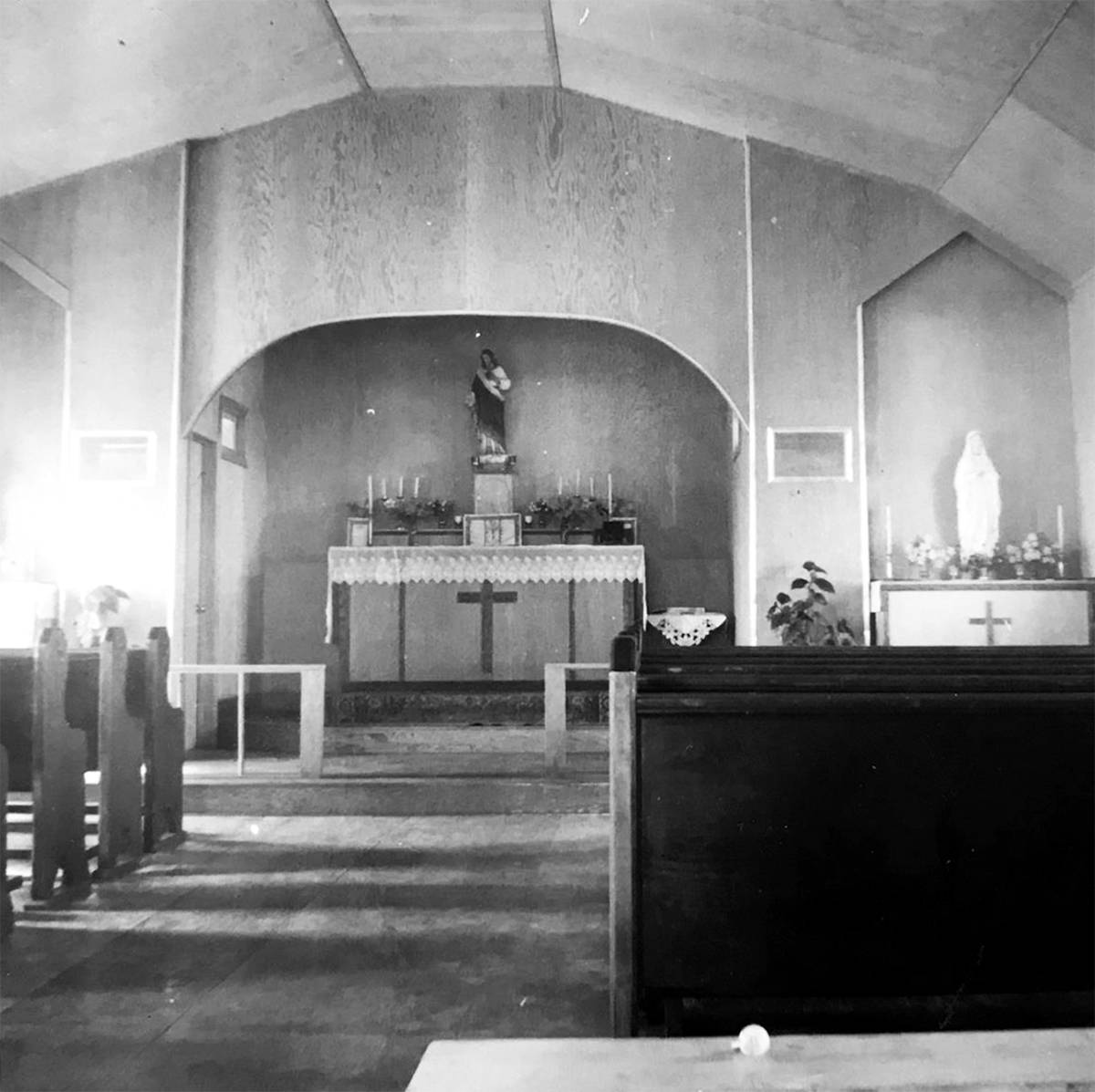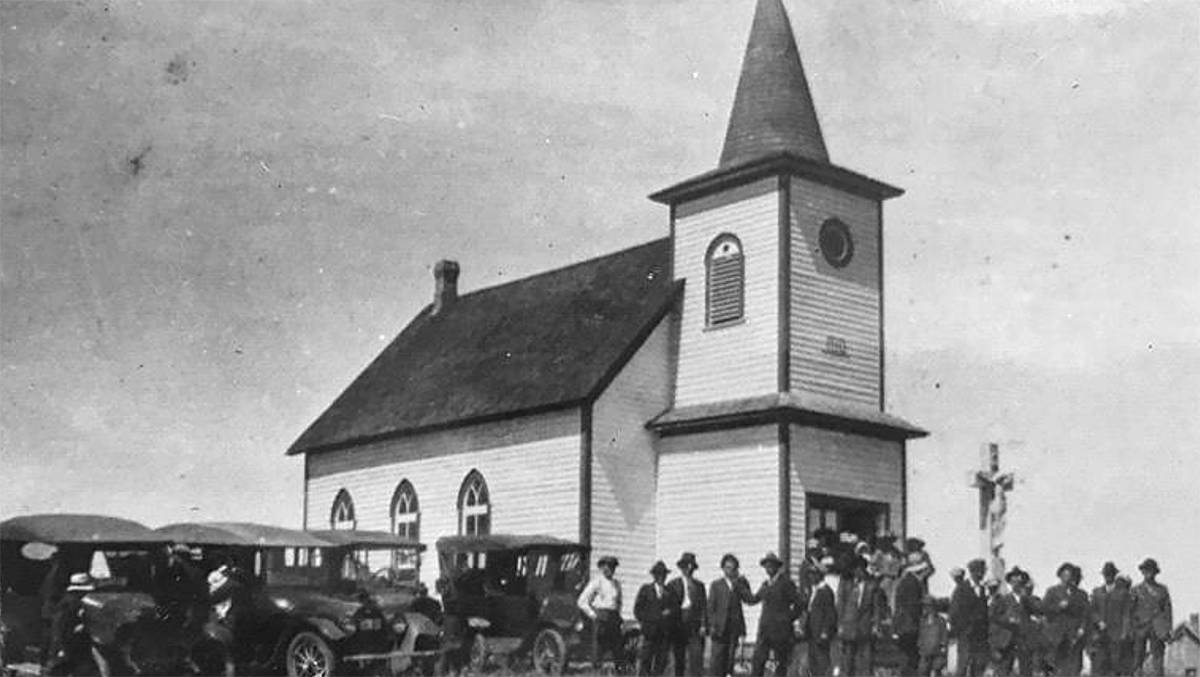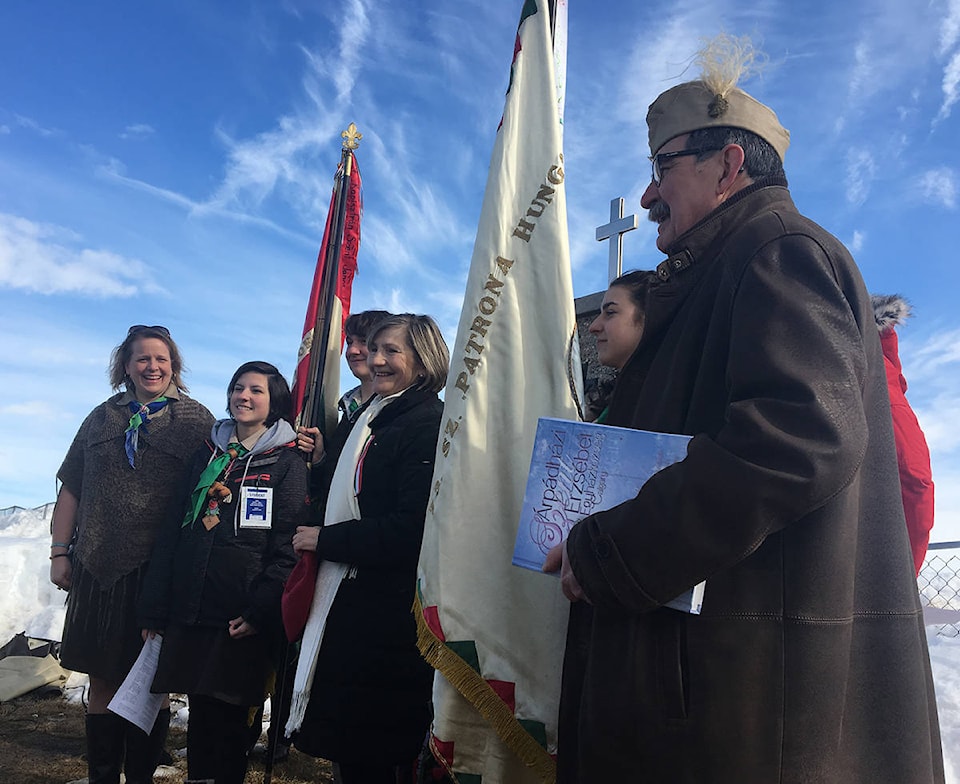Hungarians hold a special place in their hearts for settlers who came to Canada to build a new life.
To honour their dedication a special celebration was held March 17 at St. Michael’s Catholic Church west of Bashaw close to where dozens of Hungarians settled in the late 1800s. Along with hundreds of attendees, many from Hungary, there were also special dignitaries: Hungary’s Secretary of State, Arpad Potapi; Ambassador to Canada, Balint Odor and Gyula Kadar, Chief of Cabinet for the state secretariat office.
The commemoration was partially organized by Anna Szenthe, who spoke on the strong love of Hungarian’s settlers to Canada. “It’s definitely a big day for us.” said Szenthe.
“It is really close to the 1848 revolution and freedom fight; March 15 is when we celebrate that,” she explained.
Despite a slight chill in the wind, attendees joined together and were warmed by each other’s spirit and celebration of the early Hungarian settlers. Many took in the names of the people on the gravestones and had a brief look at the church, although it’s not structurally sound for tours.
Along with some speeches were prayers and recognition from Hungarian dignitaries, plus representation from Lacombe-Ponoka MLA Ron Orr, and Bryce Liddle, deputy Reeve for Ponoka County.
History is an important part of the Hungarian government’s focus. Szenthe said the government wants to preserve its history and heritage.
“For us Canadian-Hungarians in the country, we really appreciate the first settlers who came here,” said Szenthe, adding that they showed how hard work pays off.
For Ambassador Odor, the first thing that came to his mind when taking in the church and cemetery is that the land reminded him of Hungary. “I can imagine that for the settlers who arrived here that it reminded them of home,” said Odor.
Despite the early struggles of growing agricultural products, the settlers found a way to make it happen. “They were successful in doing it. They were persistent.”
Szenthe translated questions and answers for Secretary of State Potapi. For him, being able to celebrate Hungarians’ heritage is important.
“The Hungarian government puts an emphasis on every Hungarian even if they don’t speak the language any more,” said Potapi.
That heritage is an important part keeping the spirit alive.
As far as the relationship between Canada and Hungary, Ambassador Odor feels it’s strong. “Foundations of the bilateral relations are very solid.”
“A very important part of this is the common heritage,” Odor added.
Settlers not only escaped Communism in those early days, but they also contributed to the Canadian economy. The two countries also have a strong relationship in trade.
The Secretary of State has toured several settlements and helped with plans to celebrate the 1848 revolution.
Hungarian settlers made Buffalo and Red Deer Lakes home
The storied history of St. Michael’s Catholic Church west of Bashaw is one that begins with the early Hungarian settlers.
A special commemoration was held March 17 at the church grounds and cemetery. A look at the church and cemetery shows a rich history for Hungarian settlers.
The church, also known as Manfred Hungarian Church was used quite frequently. According to a special historical document created by the Hungarian Ethnographic Society of Alberta, the Meister and Mraz families were among the first to settle in the area.
“The Meisters arrived in 1894, while the Mraz (family) settled in 1895, followed by the Öröm (Orom), Dubics (Dubitz), Kerék (Kerik), Pulai (Pollay) Gallai, Tóth, Pék, Pintér, Fillinger, Földi, Rózsa, Fazekas and Csire (Cire) families. Generally, the families had four to six children each. The influx of immigration culminated in the early 1900’s to end by 1927.”
It took another 12 years before there was land available to the parishioners as most of the time they would meet in the home of the Keriks. Janos Mraz offered up five-acres of land to allow for the construction of the church and cemetery. And with some hard work, in 1910, the church became a reality.
A two metre high crucifix was ordered and had this inscription (translated from Hungarian): “We adore you O Christ and bless you, because by your Holy Cross you have redeemed the world.”
The church continued to see growth.
“A highly respected and beloved parish priest of the chapel was Father Dittrich, who served at St Michael’s from 1938 to 1959, and who is still fondly remembered,” explains the historical document.
Along with countless weddings and Christenings, the church was also extremely busy with many church activities. But one wedding was special.
“The first double wedding took place on Jan. 8th, 1913, when Father Benedict Van Wetten from Wetaskiwin married John Mraz Jr. (the donor of the land) to Erzsebet (Elizabeth) Orom, and Ferenc (Frank) Orom to Katalin Foldi,” states the historical record.
With the stormy summers in the area, the church steeple became damaged in 1935 and was eventually replaced by a wooden cross, which remained until 1955.
“Slowly but surely, the building started to show the passing of time until in 1955 it underwent major reconstruction and renovation. This allowed the installation of a modern heating system and the electrical wiring provided light for the comfort of the parishioners.”
The rebuilt church was used for many years but marked its last wedding on May 22, 1971. Four years later the church was officially closed due to a lack of parishioners.
“Its doors stayed open till the mid 1980s for anyone wishing to spend a quiet moment. However, due to the disappearance of several valuable relics and religious objects, finally a padlock closed the main door shut,” explains the record.
However, a special golden wedding anniversary opened its doors once again in 1989 to celebrate Lorinc and Margit Orom’s 50th anniversary. “They were first married in this church with the blessing of Father Dittrich 50 years prior, and were fortunate to have been blessed again by him.”
